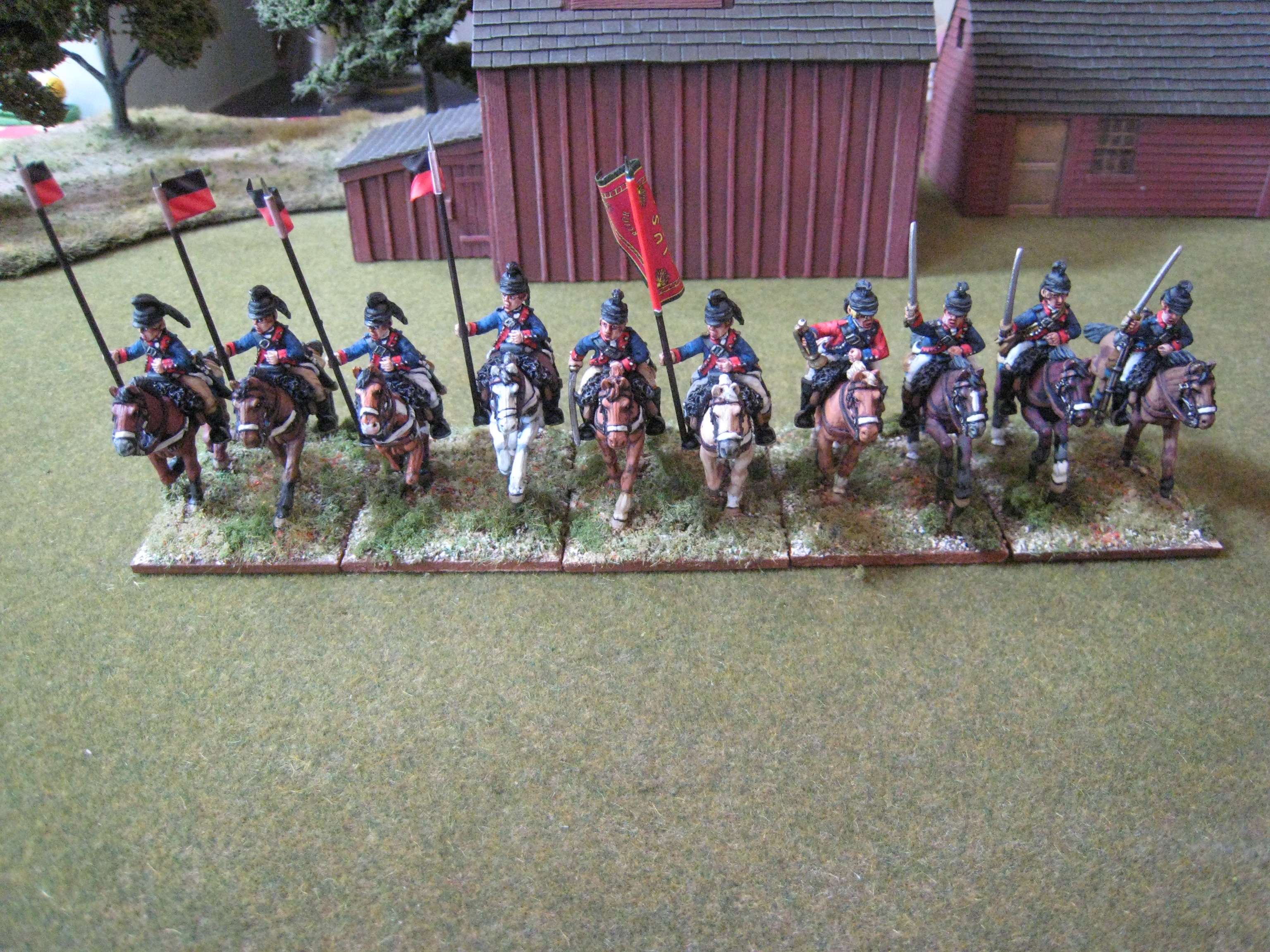
Casimir Pulaski was born in in Poland in 1745 and began soldiering at an early age. In 1777 he met Benjamin Franklin and Lafayette in Paris, who then introduced him to General Washington. Pulaski seems to have started off with some sort of staff or advisory role but was then made a brigadier general and given command of all American cavalry. He spent the winter of 1777-8 training and outfitting the cavalry units but in March he resigned his command and suggested to Washington that he form an independent legion of cavalry and light infantry. This idea was approved by Congress in March 1778 (see below) and Pulaski's Legion was born. Many of the recruits were German deserters and British PoWs, officered by Polish and French expatriates (apparently thirteen Polish officers served under Pulaski in the legion). In October 1778 the Legion and some other troops were attacked at what became known as the "Little Egg Harbor Massacre" and lost 30 men. In February 1779 the Legion was sent to the south and Pulaski was instrumental is lifting the siege of Charleston. The Americans then moved onto their own siege of Savannah. By this time French forces had arrived and on 9 October 1779 the allies made their disasterous attack on the town. Seeing the French infantry falter, Pulaski galloped forward with his legion to rally the men but was mortally wounded by cannon shot. He died two days later, on 15 October 1779. His Legion was disbanded the following year and the men transferred to
Armand's Legion.
The published "British Grenadier!" scenarios only feature Pulaski's Legion once - 10 figures at Savannah. I painted
Pulaski himself back in 2011, using a Eureka Miniatures "Baron Munchausen" figure. For his Legion I've used the Eureka "ragged Continental" cavalry figures, wearing brass helmets. I painted all the figures and horses last year, having picked up some reinforcements from Eureka at Salute 2016. However, for whatever reason the figures came with the wrong helmets. I knew that Eureka would have replaced them without any fuss, but I failed to let Eureka know and then eventually this year's Salute was just around the corner. I'd been mulling over what figures to use for Loyalist South Carolina cavalry, so I thought I'd just order some more figures and re-order the correct helmets. So I spent last week painted all the helmets and finishing off the basing, even though the figures themselves were painted almost a year ago!
There is some debate as to whether the legion contained lancers and, if so, how many. I've seen references to the cavalry element of the legion being 3 troops, of which one consisted of lancers, but there is also evidence that all the cavalry were armed with lances, at least initially. The Continental Congress' resolution of 28 March 1778 which authorised the raising of the legion stated as follows:
'' Resolved. That Count Pulaski retain his rank of
brigadier in the army ot the United States, and that
he raise and have the command of an independent
corps to consist of sixty-eight horse, and two hundred
foot, the horse to be armed with lances, and the foot
equipped in the manner of light infantry; the corps
to be raised in such way and composed of such men
as General Washington shall think expedient and
proper, etc."
Pulaski seems to have recruited more men than Congress ordered, as the muster rolls of August 1778 refer to "three companies of horse, armed with lances, and three companies of infantry, a total of three hundred and thirty." So how many troopers were actually armed with lances and for how long? Who knows - but the justification for having lancers is there in the archives. So I decided to give lances to 4 of the rank-and-file figures (which of course meant using the same standard bearer figure 5 times). The pennants are from Adolfo Ramos - I don't know how authentic they are, but the lances would look a bit bare without them. My first choice was white over red, but I realised I'd used most of them up on my BAL dragoons, so had to use black over red instead (the only other option was yellow over light blue!). I think they look ok.

The legion's flag is well-known and has a complicated design, Despite there being plenty of information on this flag, no one seems to make it in 25mm but it was pretty easy to download a couple of pictures and make my own (I wasn't going to try to paint it myself from scratch). It reads "Unita virtus forcior" [sic], which is supposed to mean "union makes valor stronger"; and then, on the other side, "Non alius regit", which means "no other governs". Apparently the flag was rescued from the Savannah battlefield by a wounded lieutenant and now resides with the Maryland Historical Society in Baltimore.
10 figures. Painted March-May 2016.
